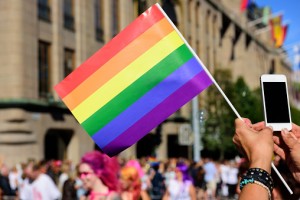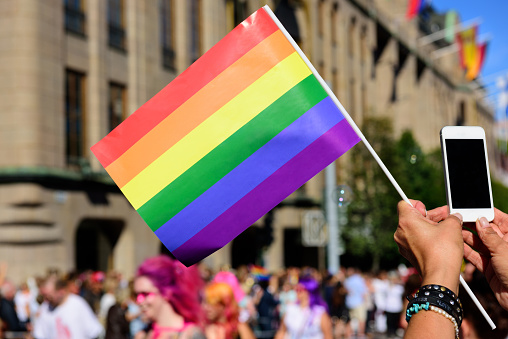By Maren Dale, News contributor
Although progress continues to be made toward lesbian, gay, bisexual, transgender and questioning (LGBTQ) equality in the U.S. — as evidenced by marriage equality and better recognition of and respect for people who identify as LGBTQ — this progress is not felt by all members of the LGBTQ community.
For LGBTQ youth in foster care in particular, the challenges often seem insurmountable. For instance, sometimes when they come out to their foster families, they not only are met with disapproval, they are forced to leave the home.
 Even if they aren’t forced out, they often feel rejected and many run away and become homeless. Other negative consequences from coming out include relationship issues and drug or alcohol abuse.
Even if they aren’t forced out, they often feel rejected and many run away and become homeless. Other negative consequences from coming out include relationship issues and drug or alcohol abuse.
True Colors
True Colors, based in New York, N.Y., is a national organization working to help LGBTQ youth, with a strong focus on preventing homelessness.
According to their research, although LGBTQ youth make up just 7 percent of the foster youth population, a full 40 percent of youth experiencing homelessness identify as LGBT.
Christa Price, LMSW, is a program officer for the organization. When asked what social workers can do to help, she offers this suggestion.
“What we hear from youth over and over again is that they want to be able to walk into a space, show up as themselves and be gendered correctly and consistently,” she said. “If those places are hard to find or don’t exist, build relationships with agencies that have space and may be able to provide this.”
While finding a physical location could take some time, Price says there are other things social workers and other adults can begin doing now to support these youth:
Always use the name they want to be referred by, and the name they chose for themselves. This may be different from the name they were born with or the name on their legal ID.
Ask them what pronouns to use when speaking to them or about them, and use them consistently.
Get informed about the policies and practices specific to your area regarding LGBTQ youth in foster care.
Within group home settings and shelter systems, give youth a choice regarding which bathroom they want to use or what sleeping arrangement they prefer.
If your state does not have laws that help protect LGBTQ youth, form those relationships yourself. Find agencies and organizations so youth have a place where they can be involved in programs and find support.
Sanctuary Palm Springs
Sanctuary Palm Springs is a new transitional housing program based in Palm Springs, Calif., focused on helping LGBTQ foster care youth who are ages 18-21 — a critical period in their development, when they are transitioning out of the foster care system and into adulthood and independence.
The organization provides a home where youth can live for up to three years, where they receive support, education and mentoring.
NASW member Julie Siri, MSW, LCSW, is program director for the organization. Since 2015 when she began working with Sanctuary Palm Springs, she has helped the organization navigate the many obstacles they faced — from housing laws to funding obstacles and beyond — to get licensed and finally open in November 2016.
Now that this groundwork has been laid, not only are they operational, they are in the process of opening a second location.
Siri explains that in her role, she has observed that social workers are especially well-suited to work with LGBTQ foster youth and encourages social workers to get involved.
“We want these youth to be in charge of their own lives — and empowerment and self-determination are also core principles of social work,” she says. “We also promote a life-affirming style, to move forward and become more successful, which is also a social work value.”
Here are other ways Siri says she sees social workers adding significant value to the lives of LGBTQ foster youth in transition:
Social workers value teamwork and promote growth through relationships and inclusion.
There is great diversity within the social work profession and being culturally competent is a core social work value.
Social workers have a biopsychosocial perspective and have been educated in multiple disciplines. They understand a bit about biology, medicine, psychology and more — and all of these things impact LGQTQ youth in foster care.
Social workers have the ability to understand the grief LGBTQ youth experience in having their identity invalidated and help them find ways to overcome it.
Finally, she says, the modeling social workers can offer could be the most beneficial of all.
“If social workers live with integrity, if they keep their word and live out their values, this is great modeling for youth to see,” Siri said.
Resources
• True Colors (truecolorsfund.org) offers free online training, toolkits and other resources for social workers and service providers working with LGBTQ youth
• Sanctuary Palm Springs (sanctuarypalmsprings.org).
From the July 2017 NASW News.




